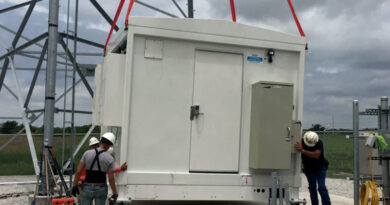PNM: State-of-The-Art and 2019 Roadmap
By Larry Wolcott
I was recently sorting through some old notebooks and stumbled across a few pages that were dated 2009. The drawings and formulas were the early conception of our PNM (proactive network maintenance) signature matching algorithm. I fondly remember the day we brought this amazing new capability to life, thinking about how important this will be for the industry. We were almost immediately able to diagnose and locate virtually every imperfection in our coax plant (and drops) including fault distance and severity. This innovation has proven to be a profound moment for cable, as we continue to make dramatic improvements to the reliability of our networks. All of this helps us to provide better products and customer experiences, while leading the charge on faster speeds, lower latency and more capacity.
Since then, Comcast has evolved PNM to include even more capabilities. While not a comprehensive review, the state-of-the-art in PNM at Comcast consists of the following tools:
- An upstream adaptive pre-equalization analysis to identify and locate faults and distances. With 40+ million test points and four upstream channels measured three times daily, we are analyzing over half a billion upstream channel responses every day.
- Full band capture (FBC) to remotely analyze RF spectrum performance and plant readiness for future services built on DOCSIS® 3.1, such as full duplex (FDX) DOCSIS. Today, there are millions of FBC spectrum analyzers deployed at Comcast.
- Automated fault detection, correlation and ticketing that provides consistent and reliable visibility and treatment of network conditions.
While it’s true that PNM was a key element in the DOCSIS 3.1 specification, it’s also true that the implementation of the PNM features within D3.1 is still catching up. Fortunately, at the time of this writing, most of the important parts of the PNM specification are eminently available. What follows is a partial review of the 2019 roadmap, which I’m excited to share.
Per-subcarrier MER
For those of us who have already deployed or plan to deploy orthogonal frequency division multiplexing (OFDM), there’s a fantastic suite of capabilities that are now available. The first and perhaps the biggest opportunity will be to take advantage of the powerful reporting of downstream receive modulation error ratio (RxMER) per subcarrier. This might seem mundane in a world of vast metrics that already includes per-channel MER. However, unlike the MER for a 6 MHz wide channel (8 MHz for Annex A), the per-subcarrier MER is much higher resolution, given the 25 kHz or 50 kHz subcarrier spacing. Having such a narrow MER reporting is valuable because it allows operators to easily characterize the type of problem that’s interfering with the channel, such as ingress from LTE, GSM, VHF or UHF. When the per-subcarrier RxMER is displayed in an inverted manner, it has the visual effect of allowing one to see the ingress “under the carrier,” which makes troubleshooting much easier and more intuitive. In addition to human interpretation, this also enables accurate and reliable machine analysis of these types of impairments.
Profile Management Application
Perhaps one of the most intriguing capabilities that we built in to DOCSIS 3.1 is the ability to adapt the cable modem’s receiver to variable channel conditions. We call this feature the profile management application, or PMA. Unlike today, where all modems in the same service group must receive the same modulation order, we can customize different groups of modulation profiles to maximize their performance based on their channel fidelity. Essentially, PMA allows us to use OFDM and its low density parity check (LDPC) error correction to their maximum potential, which unleashes a significant reserve of downstream capacity, performance and reliability. Using machine learning algorithms, our PMA systems quickly adapt the receiver to operate at the highest performance possible without the customer experiencing problems.
Of course, there are many new capabilities beyond those discussed in this article. From automated proof-of-performance testing to machine learning and weather-related prediction of network failures, there’s a little something for everyone in PNM. Most importantly, by investing in PNM, cable continues to demonstrate its commitment to more reliable networks, lower cost of operations and improved customer experiences.
If you’re interested in understanding more about PNM, a recommended reading is “A Comprehensive Case Study of Proactive Network Maintenance” by Wolcott, Heslip, Thomas and Gonsalves presented at Cable-Tec Expo 2016. This paper can be found for download at www.scte.org. I would also encourage you to reach out to SCTE•ISBE and CableLabs® to participate in one of the PNM working groups.
 Larry Wolcott
Larry Wolcott
Engineering Fellow,
Comcast
Larry Wolcott is an Engineering Fellow at Comcast, Next Generation Access Networks in Denver, Colorado. Larry is a founding member of CableLabs’ Proactive Network Maintenance Working Group. He serves as chairman of SCTE’s Network Operations Subcommittee Working Group 7 (PNM); Comcast ambassador to SCTE·ISBE; and 2019 president of the Rocky Mountain Chapter. Larry was named SCTE Member of the Year in 2018. He has over a dozen patents and publications directly related to PNM.





Pingback: PNM Round Table with Brady Volpe, Comcast, CableLabs, Cisco